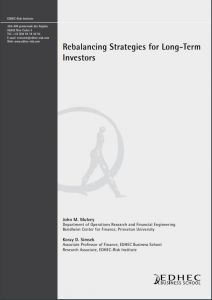

Rebalancing Strategies for Long-Term Investors
Leading pension plans employ asset and liability management systems for optimizing their strategic decisions. The multi-stage models link asset allocation decisions with payments to beneficiaries, changes to plan policies and related issues, in order to maximize the plan’s surplus within a given risk tolerance. Temporal aspects complicate the problem but give rise to special opportunities for dynamic investment strategies.Within these models, the portfolio must be re-revised in the face of transaction and market impact costs. The re-balancing problem is posed as a generalized network with side conditions. We develop a specialized algorithm for solving the resulting problem. A real-world pension example illustrates the concepts.
Author(s):
Summary:
Leading pension plans employ asset and liability management systems for optimizing their strategic decisions. The multi-stage models link asset allocation decisions with payments to beneficiaries, changes to plan policies and related issues, in order to maximize the plan’s surplus within a given risk tolerance. Temporal aspects complicate the problem but give rise to special opportunities for dynamic investment strategies.Within these models, the portfolio must be re-revised in the face of transaction and market impact costs. The re-balancing problem is posed as a generalized network with side conditions. We develop a specialized algorithm for solving the resulting problem. A real-world pension example illustrates the concepts.
Register to download PDF
Register/Log in| Type : | Working paper |
|---|---|
| Date : | 09/02/2002 |
| Keywords : |
Asset-Liability Management |

